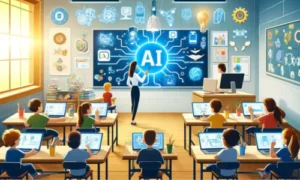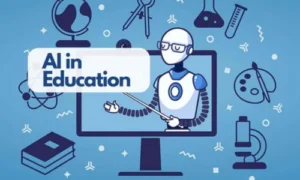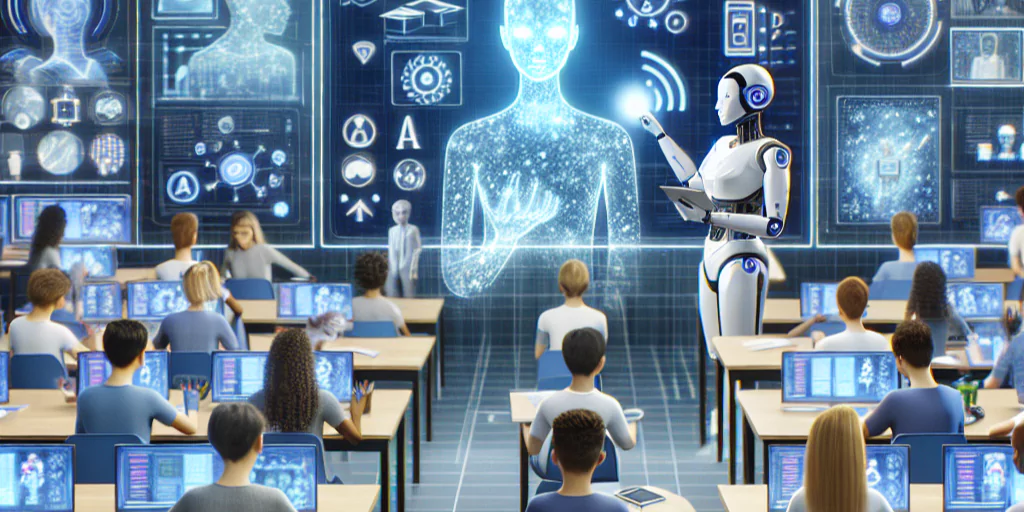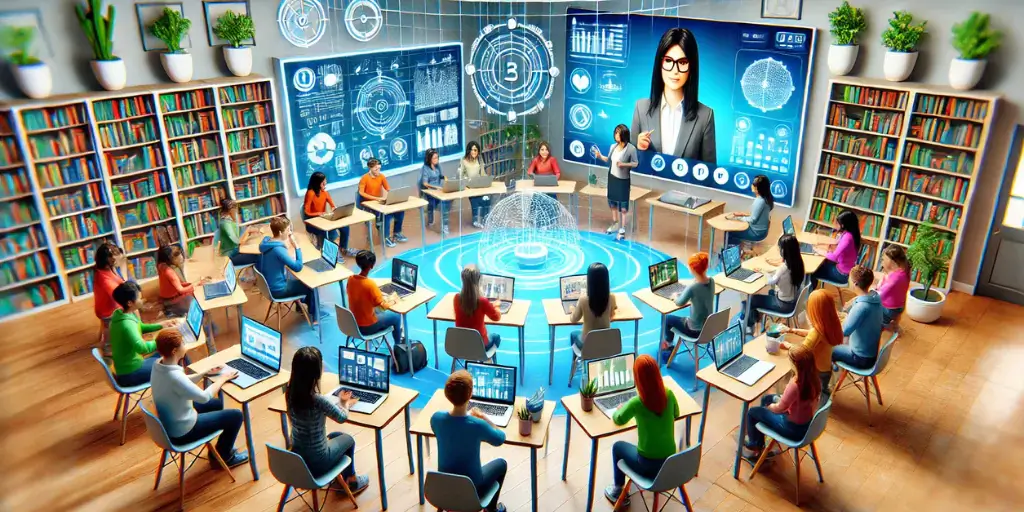Artificial Intelligence (AI) is one of the main forces behind the faster-than-ever-before evolution of education. AI is assisting teachers in improving their instruction and students in learning more intelligently through individualised learning and smart classrooms. AI in Education is becoming a crucial component of the contemporary educational system as technology develops.
What Is AI in Education?

In education, artificial intelligence refers to the application of computer systems that are capable of learning, problem-solving, making decisions, and processing language, among other things that normally require human intelligence. AI is being utilised in classrooms and online learning environments to provide individualised learning routes, automate administrative work, and even provide one-on-one tutoring to students.
Key Benefits of AI in Education
1. Personalised Learning Experiences
AI systems are able to assess a student’s learning preferences and adapt lessons to fit their learning style and pace. This helps pupils better understand subjects by ensuring they receive the appropriate information at the appropriate moment.
2. 24/7 Access to Learning Support
Students can ask questions and get assistance at any time, including after school, thanks to chatbots and virtual assistants driven by AI.
3. Automated Grading and Feedback
AI tools that evaluate multiple-choice, short-answer, and even essay-style questions might help teachers save time when grading. This enables teachers to concentrate less on paperwork and more on instruction.
4. Smart Content Creation
AI can create practice exams, flashcards, and quizzes that are dynamic and customised to each student’s progress, increasing the effectiveness and engagement of learning.
5. Bridging Learning Gaps
AI systems can provide additional resources and support by identifying areas in which students struggle, guaranteeing that no student is left behind.
Real-Life Examples of AI in Education

- Duolingo uses AI to adapt language lessons based on your progress and mistakes.
- Khan Academy integrates AI to recommend personalised practice exercises.
- Google Classroom and ChatGPT assist in writing, tutoring, and brainstorming ideas for assignments.
Challenges and Concerns
While AI brings many benefits, there are challenges too:
- Data Privacy: Collecting student data raises concerns about safety and misuse.
- Teacher Training: Not all educators are equipped to use AI tools effectively.
- Overdependence on Technology: Students might rely too much on AI instead of learning critical thinking skills on their own.
Future of Smart Learning with AI

The future of education with AI looks promising:
- Virtual tutors will become smarter and more interactive.
- AI-powered assessments will help measure deeper learning outcomes.
- Emotion-sensing AI may help detect student stress and adjust lessons in real-time.
- Global access to education will improve through low-cost AI platforms.
Conclusion
AI is already influencing how we teach and learn; it is no longer just a pipe dream. Although it cannot take the role of human teachers, it may undoubtedly improve their skills and increase the effectiveness, accessibility, and personalisation of learning. AI-powered smart learning has exciting prospects for educators, students, and educational institutions in the future.







raja slot365
June 27, 2025Chính thức “chào sân” vào năm 2012, slot365 apk là một nhánh nhỏ trực thuộc sự quản lý của CURACAO Gaming, cơ quan giám sát cờ bạc hàng đầu Châu Á. Ngay từ thời điểm ra mắt, nhà cái chúng tôi đã có trụ sở chính thức tại hai trung tâm cờ bạc lớn nhất Philippines là Manila và Costa Rica.
đăng nhập 66b
June 27, 2025Không giống với các trang web không rõ nguồn gốc, 888slot đầu tư nghiêm túc vào hệ thống quản lý rủi ro và bảo vệ người dùng. Tất cả các giao dịch tài chính đều được mã hóa, đồng thời nền tảng cung cấp công cụ tự kiểm soát cho người chơi như giới hạn đặt cược và tính năng tự loại trừ.
slot365 login
June 27, 2025888slot login apk Đối với người chơi mới, nơi đây mang đến chương trình khuyến mãi nạp tiền lần đầu cực kỳ hấp dẫn. Khi làm thao tác này thì hội viên sẽ nhận được một khoản thưởng tương ứng với tỷ lệ phần trăm trên số tiền nạp, thường từ 50% đến 100%.
xn88 app
June 27, 2025Không giống với các trang web không rõ nguồn gốc, 888slot com link đầu tư nghiêm túc vào hệ thống quản lý rủi ro và bảo vệ người dùng. Tất cả các giao dịch tài chính đều được mã hóa, đồng thời nền tảng cung cấp công cụ tự kiểm soát cho người chơi như giới hạn đặt cược và tính năng tự loại trừ.